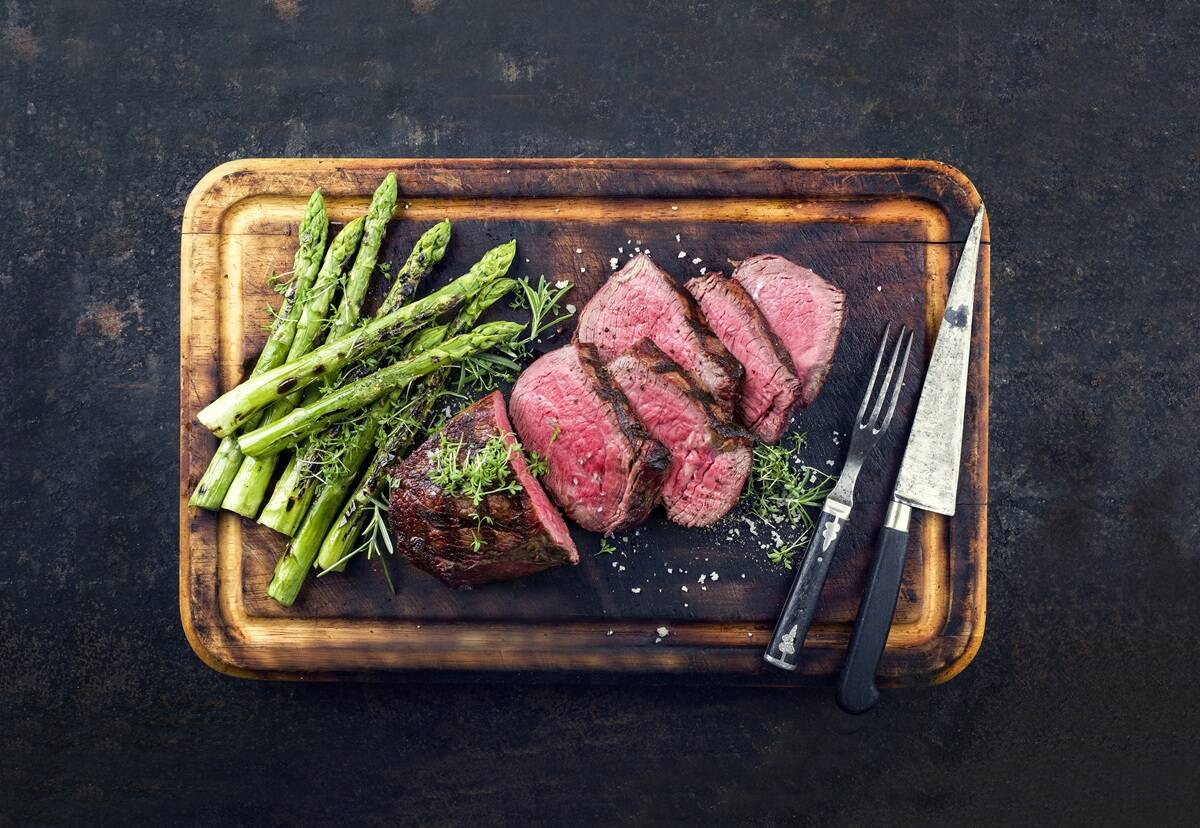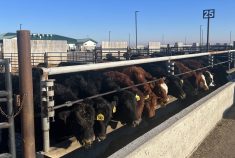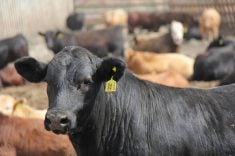As this crazy growing season comes to an end, many of you are now starting to think about your winter feeding program. It does not matter what class of cattle you are feeding, feed costs are always an important consideration. As in any year where seeding is late, moisture excessive and the growing season short, this fall is going to provide opportunities to purchase off quality feed at reasonable prices. Opportunities will include lightweight and/ or sprouted cereal grains and even frozen canola. Questions typically raised by producers regarding these opportunity feeds include what is their feeding value and what are they worth?
Read Also

Building demand together: The impact of Canada’s beef import levy
The beef import levy has become a central tool for ensuring balance in Canada’s beef industry
Lightweight grain typically results from an early frost while the crop is still standing. Bushel weight of frozen barley can range from 35 pounds or less up to a normal weight of 48 pounds. From a feeding perspective, the concern is that the kernel has not filled and thus its starch content is reduced. While this may be the case, performance of cattle does not seem to be greatly affected by feeding lightweight grain. Research by Dr. Garry Mathison and co-workers at the University of Alberta showed that there was little difference in performance of cattle fed barley with bushel weights ranging from 34 to 51 pounds, with the exception of a trend to poorer feed efficiency with the lighter barley. Similarly, Lakeside Research in Brooks, Alberta reported that feed efficiency of cattle fed lightweight barley was not affected until bushel weight was below 44 pounds. This bushel weight is often used as a cutoff below which pricing discounts are considered.
With respect to corn, research at the University of Nebraska showed that there was no difference in performance of cattle fed 46-versus 56-pound corn.
While canola seed is not typically fed to beef cattle, frozen canola can be a good source of both energy and protein as long as it has been properly processed. This can be difficult due to the small seed size and the tendency for the oil to gum up the rollers or screens. Experimenting with grinding mixtures of grain and frozen canola seed can get around this problem.
Perhaps the biggest issue with lightweight grain is variability in kernel size which can make processing difficult.
Sprouting in contrast, is the germination of cereals such as wheat or barley while the crop is in the swath. Wet weather is the culprit! Premature germination starts the breakdown of the starch and protein in the seed and can rupture the seed coat. Many cattle feeders feel that sprouted grain should be discounted. Again research would suggest otherwise! Studies across the Northwest U.S. indicate that there is very little difference in feeding value of sprouted wheat or barley.
What are the potential concerns with feeding off-quality grains? Moisture is again the culprit. Specifically, heating and mould can occur if sprouted grain is stored at moisture levels greater than 15 to 17 per cent. To avoid these issues, you need to take proper storage precautions and focus on using this grain as early as possible.
The concern from excessive mould growth centres primarily on the potential for mycotoxin production that can lead to issues ranging from death to poor growth and abortions. Mycotoxins are produced by fungi (mould) that infect wheat, barley, rye, corn, any cereal really, in the field or in storage. For most of us in Western Canada, our chief concerns are ergot and fusarium head blight, a fungal disease of wheat which can lead to a toxin known as deoxynivalenol or DON and to some extent with aflatoxin production in corn.
Ergot is definitely a concern as feeding infected grain to cattle can lead to a severe and very characteristic disease (sloughing or loss of body parts). Ergot bodies are very hard, similar in shape to the grain kernel with similar or larger size and are dark brown to black in colour. An important feeding guideline is that you do not feed ergot-contaminated grain to pregnant animals. For other classes of cattle ensure that ergot contamination of the total diet is less than 0.1 per cent by weight on a dry matter basis. This means that grain contaminated with more than one ergot body per 1,000 kernels, particularly in finishing diets, is potentially dangerous and should be cleaned or blended to safe levels before feeding.
Issues with DON or aflatoxin are not as clear cut. First, cattle are better able to handle these mycotoxins than other animals in part due to rumen fermentation. As a result, we can blend mouldy grain with clean grain to reduce the potential for disease or production losses. Secondly, storage conditions play a large role in mycotoxin production and the presence of mould does not necessarily mean the grain is contaminated with mycotoxins. If you suspect significant field contamination or had excess mould development in storage, your best approach is to consult a nutritionist to determine the extent of contamination and to evaluate the potential for blending and if necessary, arrange to have the grain tested prior to feeding.
———
JohnMcKinnon isabeefcattle nutritionistat theUniversityof Saskatchewan
















